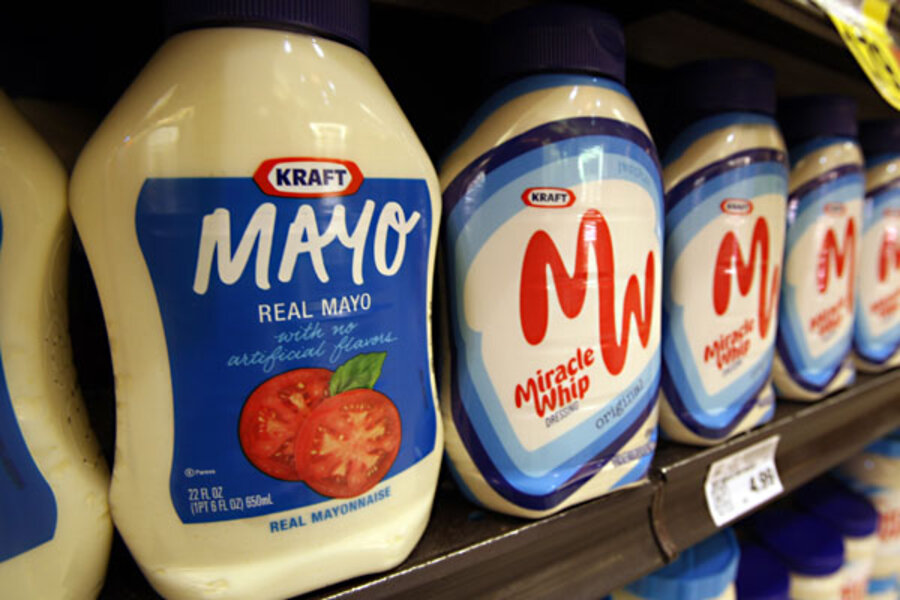Kraft Foods profits rise after recent split
Loading...
| New York
Kraft Foods is embracing the spirit of a startup and betting that innovation will help it grow, as the maker of household names such as Oscar Mayer, Miracle Whip and Velveeta looks to redefine itself after splitting from its more glamorous global snack foods business.
The company, which was established in 1903, said Wednesday that its net income rose 13 percent in the third quarter, as a mix of new products, increased advertising and productivity improvements lifted results. But the company cautioned that there were limitations to the conclusions that could be drawn from the comparison with last year, before the companies split. Although it stood by its outlook for 2013, Kraft said revenue in the fourth quarter should be flat or down as it prunes less-profitable products and continues incurring restructuring costs.
The results are the first since Kraft Foods Group Inc., based in Northfield, Ill., split with its snack food business. That company, which is called Mondelez International Inc. and has brands with global appeal including Oreo, Cadbury and Nabisco, is expected to grow at a faster rate than Kraft.
The split was intended to allow each of the companies to focus on a more targeted portfolio of products, thus accelerating growth.
At Kraft, CEO Tony Vernon said the company felt like a startup of sorts after the break, with executives working to clean up the company's lineup of less-profitable product extensions and revitalize languishing brands.
In coming months, for example, Vernon said Jell-O would be a brand "moms and kids are going to rediscover" as the company rolls out new packaging and marketing.
"Jell-O is one of the great brands Kraft has the chance to revitalize," Vernon said in a conference call with analysts. But he noted that it faces formidable competition from the "explosive" growth of yogurt in recent years. Jell-O, along with Planters and Capri Sun, saw volume declines in the quarter.
Vernon also noted that Kraft could do a lot better with its coffee business. With Maxwell House, Vernon said inefficiencies in production left the brand with worse margins than its biggest competitor, Folgers. He also noted that the company's Gevalia premium coffee and Tassimo single-serve coffee have plenty of room for growth.
In addition to bolstering its flagship brands, Kraft is betting that innovation will drive growth. Last spring, for example, the company introduced its MiO liquid drops, which can be squeezed into water for flavored drinks. The drops have spawned copycats including one by the Coca-Cola Co. MiO now has 11 varieties, including two energy drink versions that were introduced this year.
To navigate the challenging economy, Kraft is also moving to provide tiered options of "good, better and best" prices in each of its categories. With cheese, for example, its Cracker Barrel brand is positioned as a more premium offering than its namesake cheese.
For the period ended Sept. 30, Kraft said it earned $470 million, or 79 cents per share. That compares with $417 million, or 70 cents per share, a year ago.
Revenue rose 3 percent to $4.6 billion, as volume from new products offset the discontinuation of less-profitable items, such as certain package sizes of Planters and Oscar Mayer. Retailers also stocked up on inventories before the split, which took place on Oct. 1.
Analysts on average expected a profit of 69 cents per share on revenue of $4.54 billion.
Gross profit rose 16 percent as costs for ingredients eased. A lower effective tax rate offset restructuring costs associated with its split from Mondelez.
For 2013, Kraft still expects to earn $2.60 per share, including 26 cents per share in restructuring costs. But in the current quarter, the company noted that revenue could be flat to down as it continued to prune products and retailers remain stocked up on inventories. Without providing any specific earnings per share guidance, the company also noted that the fourth quarter would be the first that reflected its costs as a stand-alone company and that restructuring costs would continue.
In December, the company plans to recommend quarterly dividend of 50 cents per share.
Its shares were down 30 cents at $44.40 on a day when the broader market fell sharply.







